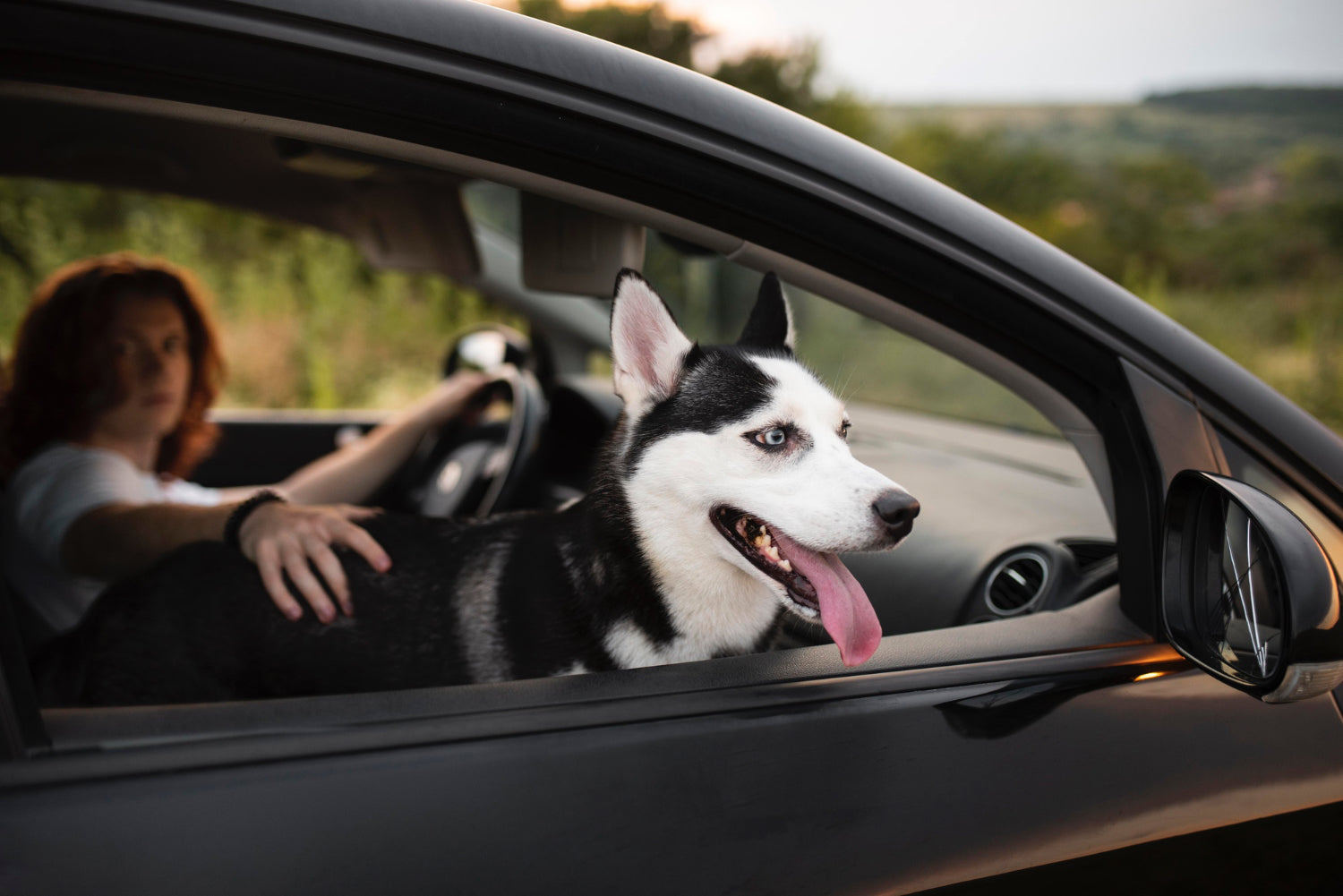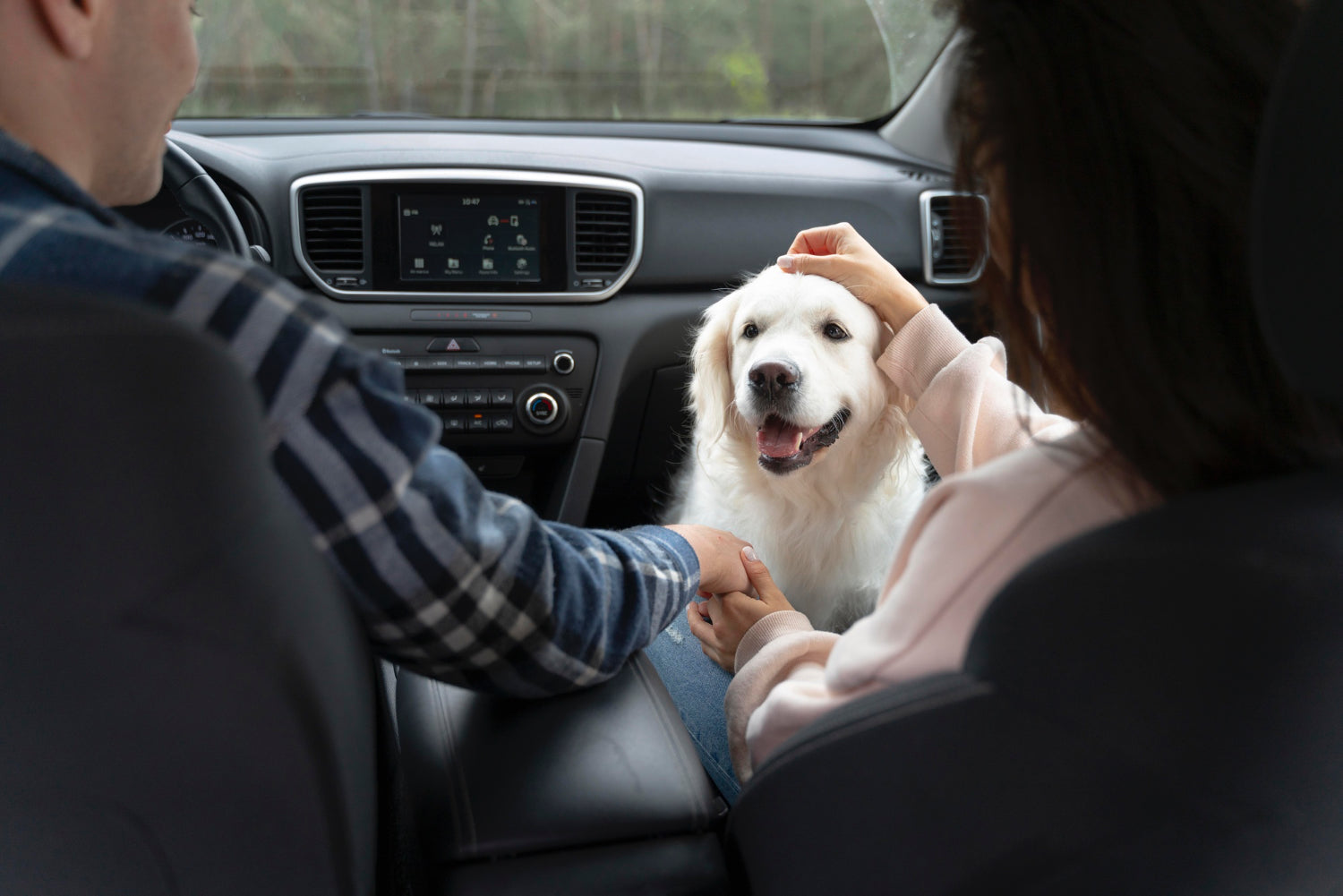As pet owners, we always want to ensure our furry friends' well-being and safety. This is especially true when we take them with us for a car ride. There are many potential risks and hazards involved when traveling with pets, which can result in injuries – or worse.
Some common risks and hazards include sudden stops or accidents, which can cause pets to be thrown around or even ejected from the vehicle. Pets may also become anxious or stressed during car rides, which can lead to dangerous behavior such as jumping out of the car or distracting the driver.
It's therefore our responsibility as pet owners to learn and understand how to keep them safe while traveling with us.
Pet Safety on the Road
If you're a pet owner who takes your pet's safety seriously, then this post is for you. Discover valuable tips and insights on how to keep your pet safe during car rides, prevent potential accidents, and ensure their comfort at the same time.
1. Choose an Appropriate Restraint System
When planning to travel with a pet, often the first question asked is: "How do I safely yet comfortably restrain them?"
Thankfully, there are several pet restraint system options available on the market. These systems can range from a simple harness that utilizes your vehicle's built-in seatbelts to full-on pet carriers.
 Here's a list of different types of pet restraint systems that you can expect to find:
Here's a list of different types of pet restraint systems that you can expect to find:
Dog Beds - A dog bed is designed to be an extra car seat cover that hangs between the back of the front seat and the front of the back seat creating a literal hammock for your pet.
Seat belt and car harness - Designed to fit like a regular leash harness but with a shorter strap that loops through a seat belt.
Pet car booster seat - This product is placed high on your vehicle's chair giving your pet an elevated and unobstructed view.
Zip-line harness - A backseat restraint that lets your pet move back and forth plus sit-and-stand while keeping them out of the front seat.
Travel crate - This product is a pet crate designed specifically to transport your pet in your vehicle. Note that this product is not intended for use on airplanes or to carry your pet around.
Boot guard - Serves as a partition between your car boot and car seats, giving your pet space to move while keeping them away from your vehicle's passenger area.
Back seat barrier - This soft cloth is designed to be a barrier between your car's front seats and the back seat.
As you can see:
There are several types of pet restraint system options on the market. The type you select will depend on factors such as your pet's size, weight, temperament, and how easy the product is to install.
2. Secure the Environment
After selecting your preferred pet restraint system, it's time to prepare your vehicle's environment to accommodate your pet.
You'll want to use durable, water-resistant, and pet-friendly car seat covers, such those offered by SeatCoverSolutions, to protect your seats from scratches, hair, and dirt while also providing ample padding and security for your pets.
Depending on your pet's needs, you'll need to do some climate control. Maintain a comfortable temperature and make sure your pet has enough ventilation, especially when you need to leave them in the vehicle temporarily.
Organize your storage in a way that lets you access your pet gear and accessories easily while also keeping them secure and out of the way.
Keep your pet away from objects or spaces that can distract the driver (e.g., getting on the dashboard or the driver's lap, chewing on a choking hazard, or making a sudden or continuous noise). It should go without saying, to especially keep your pet away from dangerous areas like the pedals or dashboard buttons.
3. Prepare Your Pet for the Journey
Not all pets react the same to a change in environment, especially if that environment is moving. You can make your vehicle as comfortable and secure for your pet as you want but it won't matter if they're too afraid to even get in.

You may need to train your pet to gradually acclimate to your vehicle and the sensation of movement. Giving your pet an unobstructed view of the surroundings or a way to lie down may help if they suffer from motion sickness.
For extreme cases, you may need to contact your veterinarian to discuss your pet's travel anxiety. While you're there, ensure that your pet is up-to-date on their vaccinations and ID tags.
Furthermore:
Always pack a pet travel kit to meet all of your pet's needs. This kit should include enough food, water, and medications to last your trip. Including some of your pet's favorite toys in this kit is also a good idea.
4. Make Regular Stops
Long drives cramped up in an enclosed space can tire out anyone – including your pet. This is why one should never underestimate the importance of rest stops.
Park your car somewhere safe, get out, and take a short walk with your pet. You can use this time for much-needed bathroom breaks, plus the exercise should get the blood circulating again.
You can also plan your route to make regular breaks at pet-friendly rest areas and pit stops. A quick search or app download can help you identify these areas easily. Depending on what type of pet you have, you may need to keep your pet on a leash or carrier when making these stops, together with their tags and ID.
5. Emergency Preparedness
You never know what emergencies you're going to encounter on your drive. This is why it's crucial to stock up your emergency kit with supplies for you and your pet. Better yet, why not build up a pet-specific emergency kit? This takes away the guesswork when determining which supplies are for you or your furry friend.

Now that you've prepared your emergency kit, it's time to learn to identify the early signs of pet heat stroke and other concerns. To make sure your knowledge is up-to-date, you may want to ask your veterinarian for some tips.
Speaking of vets, it will be optimal to familiarize yourself with local emergency vet clinics along your route.
6. Tips for Traveling with Multiple Pets
All the information we provide in this article can also be applied when traveling with multiple pets, albeit with some adjustments.
For instance, you may want to choose a restraining system that secures all your pets while also giving you easy access to all of them in case of emergencies. Remember that the element of risk increases the more pets you bring with you so make sure you prepare accordingly. Bring enough supplies (food, water, medications, toys) and fill up your pet emergency kit to accommodate all of them.
You also need to make sure that every pet has acclimated to the sensation of being in a moving vehicle together with your other pets. Acclimate them slowly and gradually with short rides at first.
Remember to monitor your vehicle's temperature and ventilation and adjust them as needed. You may need to use sunshades for your rear and back windows.
Coordinate your rest breaks and pit stops in such a way that each pet gets enough exercise. If you're going on a short drive, you may not want to feed any of them beforehand to avoid them vomiting while in the car.
In Conclusion
Taking a drive with your furry best friend requires ample planning to ensure their safety and comfort.
Choose the right vehicle pet restraint system. Gradually acclimate your pet to your vehicle and the sensation of movement.
Make sure your vehicle's environment is comfortable and safe for them. Make regular stops and bathroom breaks to help reduce their anxiety.
Prepare for emergencies and ask your veterinarian for some helpful emergency tips.

